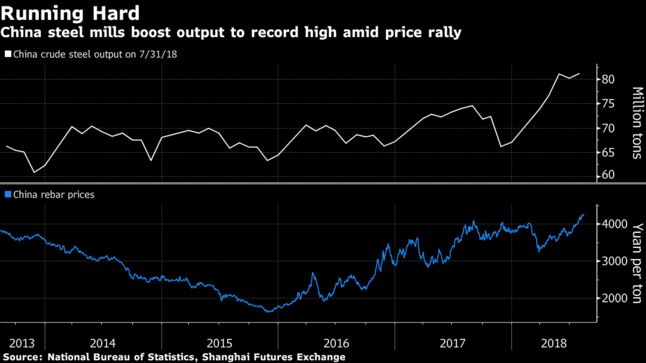plawolf
Lieutenant General
I also read
China rejects allegations of detaining million Uighurs in camps in Xinjiang
Updated 2 hours ago
And this is related to Chinese economics, how?
I also read
China rejects allegations of detaining million Uighurs in camps in Xinjiang
Updated 2 hours ago


The Chinese economy is on a solid footing to maintain a stable and positive trend despite a complicated domestic and external environment.
The quality of China's economic growth has improved significantly with strengthened resilience and sustainability, said Zhang Liqun, a researcher with the State Council's Development Research Center, in a written article published in People's Daily Thursday.
China has established a trend of stable economic growth as its GDP growth has remained within the range of 6.7 percent to 6.9 percent for 12 quarters.
As the trend of global economic recovery has become clear, China's export will maintain its growth momentum with some fluctuations despite rising trade and investment protectionism.
Zhang also cited the progress of urbanization, increased industrial capacity utilization, rising corporate profitability and active domestic consumption as factors to support China's stable and positive economic growth.
"Challenges still exist including changes in the external environment and corporate financing difficulties. However, these will not change the stable and positive trend, and financial risks are controllable as China's macro-control policies will gradually take effect," noted Zhang.
In the future, China should continue to foster new growth impetus, enhance innovation, strengthen corporate competitiveness, deepen reform, expand opening-up, improve macro-control and keep liquidity reasonable and abundant, Zhang said.
A total of 73.5 percent of 2,006 respondents have considered buying new energy vehicles (NEV), according to a recent survey released by China Youth Daily.
Regarding the advantages of NEVs, especially electric vehicle (EV), 58.8 percent of the respondents believed they have lower energy-costs, 37.7 percent believed they have excellent power performance, and 25.5 percent believed they are easier to gain license plates.
"Compared with traditional vehicles, NEVs are better in aspects such as the exemption from restrictions on license plate numbers, the government subsidies, the lower price of electricity versus that of petrol and the particular appeal to environmentalist consumers," said Lin Boqiang, head of China Institute for Studies in Energy Policy at Xiamen University.
However, there are still concerns over NEVs. 64.3 percent of the respondents were worried about the lack of charging facilities, 52.5 percent about the battery endurance, and 24.5 percent thought NEV technology was immature.
"Besides the price-performance ratio, the safety of batteries is also very important, but currently consumers are worried about battery costs or safety," said Lin, "Charging won't be a huge problem for long, as homes, office buildings, and parking lots will all be equipped with EV chargers in the future."
Some 66.6 percent hoped that charging issues can be addressed in the future, the survey shows.
Among the respondents, those from the first-tier cities accounted for 33.7 percent, second-tier cities 45.7 percent, third and fourth-tier cities 18.6 percent, and county-level and rural areas 2 percent.
China will increase funding to support weak links in the country's infrastructure, the banking and insurance regulator said Saturday.
The country will step up credit support for infrastructure projects with sound capital base and good operation, on the condition that the funding won't add up to the hidden debt burden of local governments, the China Banking and Insurance Regulatory Commission said in an online statement.
Insurance funds should support key projects via various financing channels including debts, stocks, or the combination of both forms, the statement said.
Based on analysis of ongoing infrastructure projects, banks and insurers should meet reasonable financing demand in accordance with principles for market orientation and give necessary support to unfinished projects.
The regulator also asked banks and insurers to step up financing for various sectors in the real economy, with favorable policies to be given to export-oriented companies and the private sector, according to the statement.

Japan’s Nissan Motor Co will spend around 900 million US dollars to build a new auto assembly plant in China that will increase production capacity in the company by 30 percent, the Nikkei newspaper reported on Monday.
Nissan, which operates in China through a joint venture with Dongfeng Motor Group Co Ltd, is in final stages of talks with its Chinese partner to build a new plant in Wuhan in Hubei province, the Nikkei reported without citing sources.
The investment in Wuhan, which totals 100 billion yen (905 million US dollars), is expected to have an annual production capacity of 200,000 to 300,000 cars a year, the Nikkei reported.
New production lines will be added to a Dongfeng plant in Changzhou in Jiangsu province, which will increase capacity by about 120,000 passenger cars a year, a spokesman from Nissan told Reuters in response to questions about the Nikkei’s story.
In addition to Changzhou, Nissan is exploring the possibility of expanding production capacity in China, but no further details can be confirmed, the spokesman said.
Nissan sold 1.5 million vehicles last year. Its goal is to sell up to 2.6 million vehicles a year by 2022, said the source.
Nissan in February outlined a five-year plan, dubbed “Triple One,” to increase its market share in China by focusing on electric cars and the Venucia, a no-frills local Nissan brand in China - two market segments expected to see a surge in demand. It also aims to boost sales of light commercial vans and trucks.
Rival Toyota plans to boost its China capacity over the next few years by 240,000 vehicles a year, or by about 20 percent, from its current capacity of 1.16 million vehicles a year.
